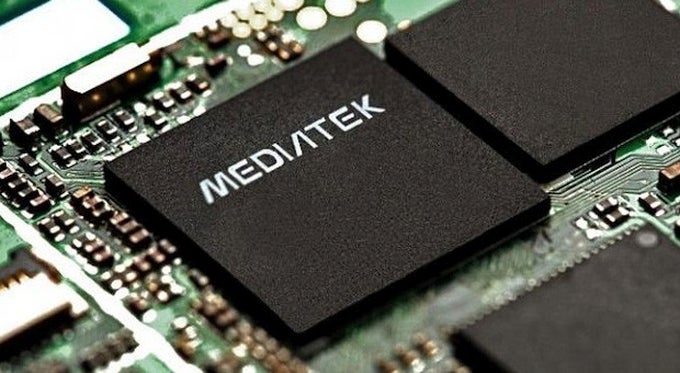5 of the best MediaTek-powered smartphones currently around

As far as we can tell, there are two levels of expansion that MediaTek is currently following. First, there's MediaTek's desire to expand to European and North American markets. Second, there's the company ambition of becoming more than a price-conscious decision for entry-level handsets.
Please note that most of the smartphones on this list are not officially available to purchase in the United States.
HTC One M9+
The HTC One M9+, the Asian variant of this year's HTC flagship, is a fairly different beast compared to the regular One M9. In the context of this article, what really interests us if the fact that the Asian HTC flagship replaces the debated Snapdragon 810 with a MediaTek MT6795 chip, a SoC that's also known as the Helio X10.
The Helio X10 integrates eight ARM Cortex A53 cores clocked at 2.2GHz as well as a PowerVR Rogue G620 GPU, being the fastest chip that MediaTek currently makes. External benchmarks show that the chip is very capable of competing in the upper midrange segment of the smartphone SoC market. Paired with such high resolutions as the one on the M9 Plus, the Helio X10 is capable of running most games, although performance will take a hit when testing out the most graphically-advanced games currently available on Android.
Gionee Elife S7
The Gionee Elife S7, rebranded under various names in markets outside China, is one of the slimmest smartphones currently available for purchase. The Elife S7 measures just 5.5mm across its waist, but it still manages to integrate a 2750mAh battery, which is about the same capacity as the Galaxy S6 battery.
The Elife S7 is powered by the MediaTek MT6752 chip, a mobile SoC that integrates an octa-core 1.7GHz ARM Cortex-A53 processor and an ARM Mali-T760MP2 GPU. It's less powerful than the Helio X10, offering mid-range performance levels. The 5.2-inch display works at 1080 by 1920 pixels, which puts some stress on the GPU when rendering graphically-intensive games, but in most cases, the MT6752 should be able to cope.
The Gionee Elife S7 also comes with 2GB of RAM, 16GB of internal storage (no microSD card slot), a 13MP primary camera, and an 8MP secondary sensor on the front. Overall, the Elfie S7 is a slim and decently specced Android smartphone, and despite its shortcomings, it's a sign of how MediaTek-powered smartphones are able to offer interesting hardware at mid-range prices.
Sony Xperia C4
Sony's selfie phone, the Xperia C4, is yet another interesting smartphone based on MediaTek silicon. The highlight feature of the Sony Xperia C4, a mid-range smartphone across the board, is its front-facing LED flash, which complements a 5MP secondary shooter.
Like the Gionee S7, the Sony Xperia C4 is based on the MediaTek 6752 chipset. Other similarities include a a resolution of 1080 by 1920 pixels -although this time on larger 5.5-inch display -, 2GB of RAM, a 13MP primary camera, and 16GB of internal storage (the Xperia C4 integrates a microSD card slot).
Interestingly, although at 7.9mm across the waist the C4 is notably thicker than the Gionee Elfie S7, the Xperia C4 comes with a slightly less capacious 2600mAh.
Like the Gionee S7, the Sony Xperia C4 is based on the MediaTek 6752 chipset. Other similarities include a a resolution of 1080 by 1920 pixels -although this time on larger 5.5-inch display -, 2GB of RAM, a 13MP primary camera, and 16GB of internal storage (the Xperia C4 integrates a microSD card slot).
Meizu MX4
Unlike the other smartphones on this list, which use the latest-generation 64-bit processors from MediaTek, the Meizu MX4 is based on the MT6595 chipset, a mobile SoC that used to be MediaTek's top offering before the chipmaker's unveiling of the MT67 line-up. The MT6595 includes four ARM Cortex-A17 cores clocked at 2.2GHz and four 1.7GHz cores clocked at 1.7GHz, as well as a PowerVR G6200 MP4.
The most notable Meizu MX4 feature is the inclusion of a high-resolution display with very slim bezels. The display measures 5.36 inches across the diagonal and runs a resolution of 1152 x 1920 pixels. Other highlights include the 20.7MP primary camera and the 3100mAh battery. The Meizu MX4 also comes with 16/32/64GB internal storage space, a microSD card slot, a 2MP secondary shooter, and 2GB of RAM. Check out our our full Meizu MX4 review to learn more about the handset.
Customers in Europe and China can also get the Ubuntu Touch version of the MX4, one that comes with the same hardware specs.
The Meizu MX5 will be unveiled tomorrow, on June 30th, and will most likely integrate a MediaTek MT6795 / Helio X10 CPU. Leaked benchmarks hint at impressive multi-core performance.
Vivo X5 Max Platinum Edition
By Western standards, the Vivo X5 Max Platinum Edition has a bit of an odd name, but this is actually a pretty decently-specced smartphone. Based on the MediaTek MT6752, the Platinum Edition of the Vivo X5 Max comes with an impressive 4150mAh battery, and this despite maintaining a 7.3mm waistline.
The remainder of the specs seem to be good enough for an upper midrange handset. This includes 3GB of RAM, a 5.5-inch 1080 x 1920 display, a 13MP primary camera, 32GB of microSD-expandable internal storage, and a 5MP secondary shooter on the front.
Follow us on Google News














Things that are NOT allowed:
To help keep our community safe and free from spam, we apply temporary limits to newly created accounts: